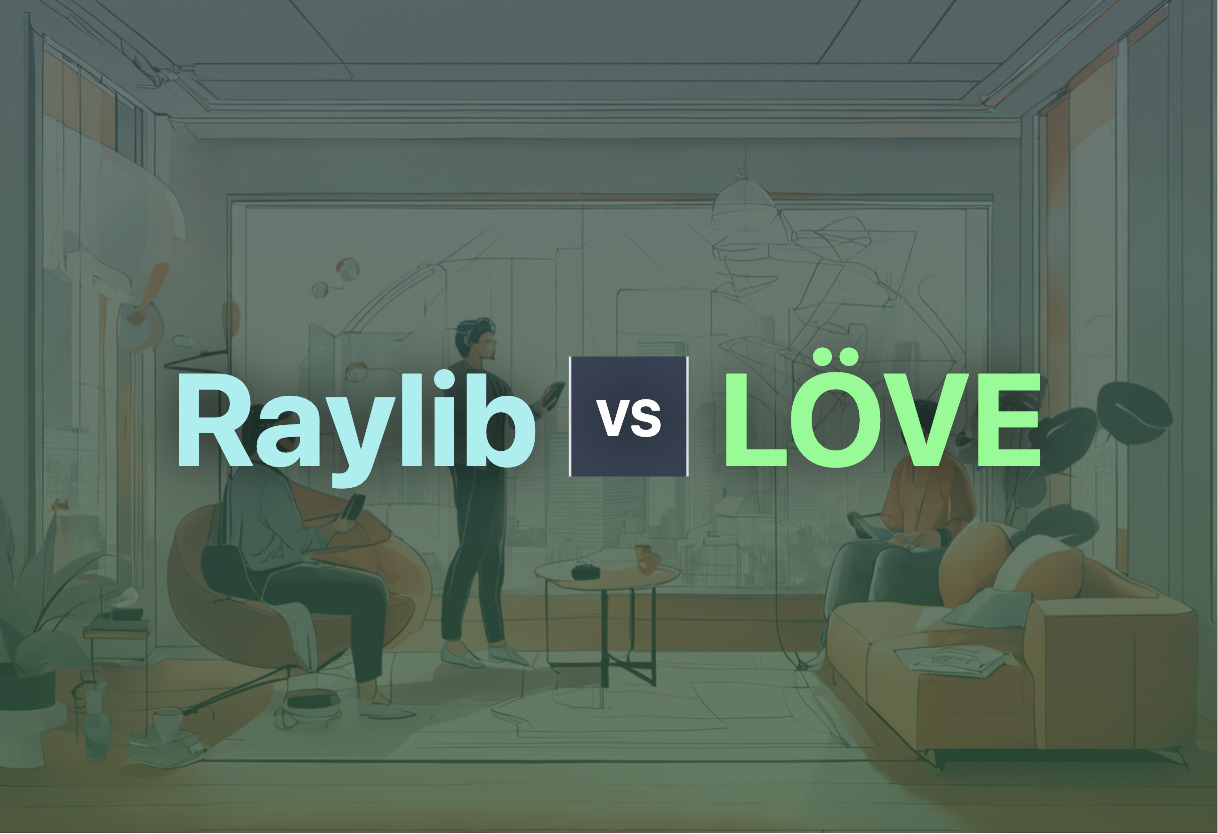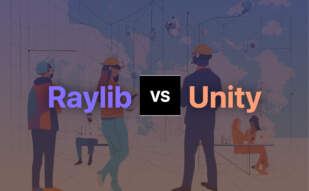For cross-platform game development, opt for LÖVE with its flexible Lua scripting, real-time code modification, and robust community support. However, if you’re focusing on prototyping, tooling, embedded systems, or educational applications, choose Raylib for its more comprehensive feature set and over 50 language bindings.

Key Differences Between Raylib and LÖVE
- Core Purpose: Raylib targets prototyping, tooling, and education, while LÖVE targets game development.
- Scripting Language: Raylib is written in C, while LÖVE uses Lua.
- Hardware Acceleration: Both support OpenGL, but Raylib also offers an OpenGL abstraction layer: rlgl.
- Community Support: LÖVE has active forums, Discord server, and subreddit, while Raylib focuses on straightforward implementation.
| Comparison | Raylib | LÖVE |
|---|---|---|
| Initial Release | November 18, 2013 | January 13, 2008 |
| Development Language | C (specifically C99) | C++, Lua for scripting |
| Cross-Platform Support | Windows, Linux, macOS, FreeBSD, Android, Raspberry Pi, HTML5 | Windows, macOS, Linux, Android, iOS |
| H/W Acceleration | Yes, OpenGL | Yes, OpenGL, OpenGL ES 2 and 3 |
| Texture Formats Support | Yes, multiple including compressed formats | Unspecified, supported through libraries |
| Shaders Support | Yes, including Model shaders and Postprocessing shaders | Yes, via OpenGL pixel shaders GLSL |
| Audio Support | Yes, with streaming support | Yes, supported through libraries |
| Data Storage Functions | Yes, with persistent data storage functions | No |
| Awards & Recognition | Awards from Google, Epic Games | Ranked 10th among indie developers on Itch.io in July 2018 |
What Is Raylib and Who’s It For?
Raylib is an easy-to-use, cross-platform library for learning video game programming. It simplifies common tasks, making it ideal for beginners and education. Established by Ramon Santamaria, and supported by wide community contributions, Raylib transcends classroom utility, extending benefits to professionals seeking rapid prototyping, graphical applications development, and embedded systems.
The tech interfaces with over 50 programming languages, drawing inspiration from Borland BGI graphics library and XNA framework. Its powerful features range from 3D support, flexible materials, shaders, to audio loading capabilities. Releasing first in 2013, Raylib has grown in influence, earning recognition from tech giants Google and Epic Games.

Pros of Raylib
- Simple to use, with a focus on clarity and easy-to-understand functions
- Multi-platform support includes Windows, Linux, macOS, Android, and Raspberry Pi
- Has unique OpenGL abstraction layer and hardware acceleration
- Powerful features wrapped up in a lean package with no external dependencies
Cons of Raylib
- Relative lack of widespread adoption compared to some more established libraries
- Best used with C language, other language bindings may not offer same experience
What Is LÖVE and Who’s It For?
LÖVE, a free, open-source game development framework, allows developers to easily create immersive interactive experiences. The cross-platform tech supports Windows, macOS, Linux, Android, and iOS. Launched in 2008, it uses Lua as the scripting language with its core engine penned in C++. Hence, LÖVE caters to indie developers, game design enthusiasts, and teams looking to develop commercial-grade games.
The powerful framework supports various key features, including OpenGL pixel shaders, touchscreen functionality, joystick interface, image/formats support, and more. With a strong community surrounding it, LÖVE has contributed to creating notable games such as Move or Die, Mari0, Kingdom Rush, and more.

Pros of LÖVE
- Powerful, flexible, and open-source, allowing for extensive customization
- Supports live editing of code during execution, promoting rapid prototyping
- Strong community support with ample resources for learning and troubleshooting
Cons of LÖVE
- Requires knowledge of the Lua scripting language
- Can be challenging for beginners due to a steep learning curve
Raylib vs LÖVE: Pricing
Both Raylib and LÖVE are open-source technologies and are therefore free to use.
Raylib
As an open-source project initiated by Ramon Santamaria, Raylib is completely free. It welcomes contributions from its user community and doesn’t come with any hidden costs or premium versions.
LÖVE
Identically, LÖVE is a free, open-source game framework. It operates under a zlib license which allows for free commercial and non-commercial use without imposing any costs on developers.
Raylib or LÖVE: Who Declares Checkmate?
For the tech aficionados torn between Raylib and LÖVE, here’s our definitive verdict.
Developer Hobbyists & Learners
For those starting their coding journey, Raylib excels with its simplified yet powerful C-based engine. Its educational bent, extensive language bindings, and no-fuss dependencies make it the ideal sandbox to hone your skills.
- No external dependencies
- Over 50 language bindings
- Emphasis on educational use

Game Developers & Indie Creators
If you are venturing into the realm of game design, LÖVE may be your true mate. Its potent blend of power, flexibility, and real-time code modifications – complemented by a vibrant community and wealth of resources – places it as the front-runner for indie game developers.
- Real-time code modification
- Powerful game mechanics
- Extensive community support

Multiplatform Software Engineers & Tools Developers
Raylib pulls ahead for software engineers and tools developers targeting multiple platforms. Its cross-platform capabilities paired with the functional raycast system and powerful shaders provide the robustness necessary for versatile tools development.
- Supports numerous platforms
- Functional raycast system
- Powerful shaders loading and use

The final verdict? If you are a developer enthusiast or learner, lean into Raylib. For the gaming revolutionaries, it’s LÖVE. Software engineer maestros may find their rhythm with Raylib.
Logan Bellbrook
Content writer @ Aircada with a knack for nature & AR/VR/XR. Blogging the intersection of tech & terrain.





